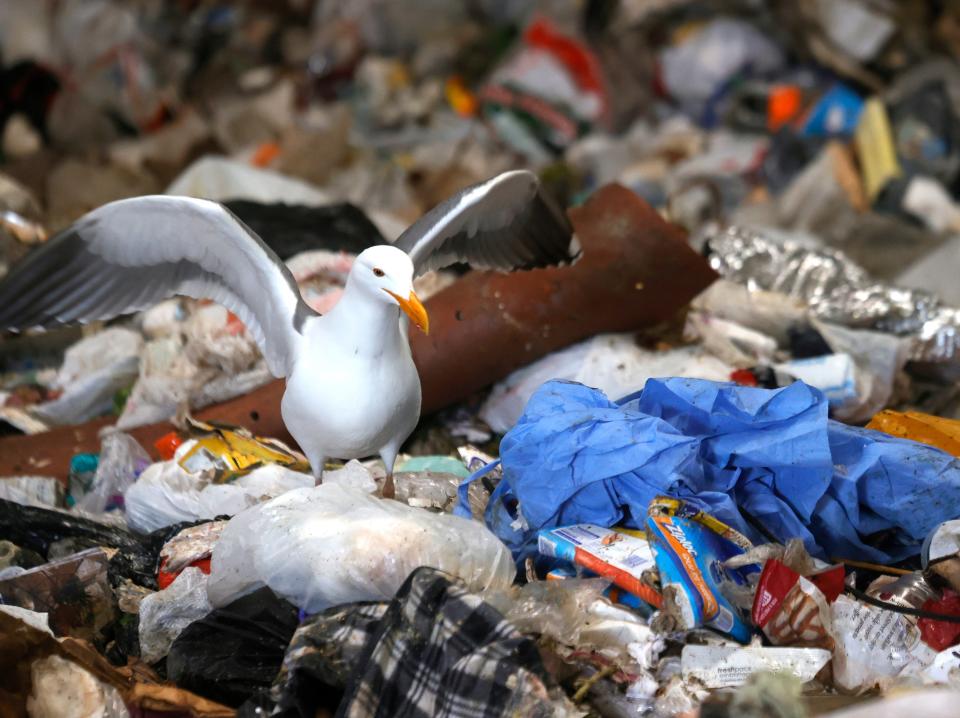Microplastics in air ‘spiral the globe’, pollution study finds

Plastic particles in the air are being blown across continents by the wind, interfering with natural ecosystems much further afield than their point of origin, a new study has suggested.
“Akin to global biogeochemical cycles, plastics now spiral around the globe,” warn researchers from the Utah State University and Cornell University, whose conclusions were published in the academic journal Proceedings of the National Academy of Sciences.
The team, led by Janice Brahney, collected atmospheric data from across the western United States between 2017 and 2019 and concluded that 220,000 metric tonnes of microplastics were being deposited across the country every year.
“We found a lot of legacy plastic pollution everywhere we looked; it travels in the atmosphere and it deposits all over the world,” Ms Brahney said. “This plastic is not new from this year. It’s from what we’ve already dumped into the environment over several decades.”
“Under the right conditions, plastics can be transported across the major oceans and between continents, either in one trip or by resuspension over the oceans,” her study said, noting that particles can stay airborne for up to a week.
While the majority of plastics we use on a day-to-day basis are disposed of by incineration, buried in landfill sites or recycled, 18 per cent still enter into the atmosphere after fragmenting into minute microplastic particles with wear or age.
The use of plastic in car tyres and roads is a primary means by which particles enter the air, with microplastics splintering free as both surfaces are ground down by heavy contact from traffic, adding to the damage already being done to the atmosphere by fuel emissions.
Another means is littering in city streets or at sea, where entire plastic islands have been found that are whipped and buffeted by high winds and strong waves that send particles soaring into the sky.
The academics found that the US, Europe, the Middle East, the Far East and India were the worst offenders when it came to land-based sources of microplastics, while the US West Coast, the Mediterreanan and Australia suffered most from airborne plastic blown in from the ocean.
Africa and Eurasia had the heaviest quantities derived from agriculture while road traffic was seen as a key contributor internationally, particularly in densely populated areas.
While a 2019 report by the World Health Organisation concluded that microplastic particles in drinking water “don't appear to pose a health risk at current levels”, the Utah researchers warn that they “may have negative and as yet unknown consequences for ecosystems and human health”.

“The inhalation of particles can be irritating to lung tissue and lead to serious diseases, but whether plastics are more or less toxic than other aerosols is not yet well understood,” the study’s authors wrote.
“Our relative ignorance of the consequences despite rapidly rising plastic concentrations in our environment highlights the importance of improving plastic waste management or, indeed, capturing ocean plastics and removing them from the system.”
Biodegradable polymer alternatives to conventional plastic are increasingly common and could represent a solution to the problem but, according to the Utah researchers, until all plastics can be broken down in nature, minute fragments “will continue to cycle through the earth’s systems”, interfering with the everyday order of the world’s ecosystems.
Read More
Greta Thunberg says Trump’s attacks on her are ‘hilarious’
WHO calls for ban on sale of live animals in food markets
Campaigners criticise Southampton airport expansion approval

 Yahoo Finance
Yahoo Finance 